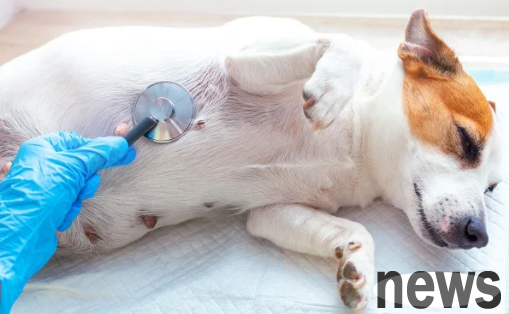Endometriitis is an inflammation caused by bacterial infection in the uterine mucosa, which can cause infertility in the diseased animals.

Causes of disease: Lack of disinfection during childbirth or difficult delivery, barbaric helper, dislodge and stillbirth retention, postpartum uterus is no longer complete, unclean mating, excessive mating, continuous estrus, and reduced body resistance, pathogenic bacteria such as dicocci, staphylococci, streptococci, E. coli invade the uterus and cause endometritis. This disease is often complications of infectious diseases such as brucellosis and paratyphoid fever.
Main symptoms
1. Acute endometriitis: The sick dog has an elevated body temperature, loses appetite or loses its appetite, is depressed, and has a urinary sensation, and mucus-induced or purulent exudates flow out of the vagina. If inflammation invades the myometrium and blood vessels of the uterus, it can lead to a large amount of fibrinogen exudation, causing necrosis of the mucosa and muscle layer, and a foul red or brown-yellow foul-odorous mucus exudate from the vagina, containing dirty white mucosa fragments. The vagina and the tail are exposed and adhered to the dry gate, causing abdominal pain in the diseased dog. When secondary peritonitis occurs, the pain is aggravated and the abdomen is refused to touch the abdomen. The uterine horns can become thicker and looser.
2. Chronic endometriitis: It usually changes from acute, and the systemic symptoms are mostly not obvious, and sometimes the body temperature rises. Vaginal examination, slightly open the cervix. Exudate of transparent, turbid or purulent flocs flows out of the vagina for a long time. The sexual cycle rate is chaotic, making it difficult to conceive even if you conceive, it is prone to miscarriage and stillbirth. Often secondary uterine pus accumulation.
Diagnostic criteria
requires culture of the contents of the uterine cavity to make a diagnosis, usually taken during open surgery or endometrial biopsy.

The treatment method is mainly to control inflammation and promote the excretion of inflammatory secretions in the uterus.
1. Uterine rinsing: Rinse the uterus with 0.1%-0.2% potassium permulentate solution once a day or once a day the next day until transparent liquid is discharged. In order to reduce the absorption of exudate, the uterus can also be washed with 5% to 10% hypertonic saline, once a day, and the concentration will gradually decrease until 1%, and the dosage will gradually decrease. After rinsing, inject Fuyangen solution into the vagina and uterus.
2. Promote the discharge of exudates: First intramuscular injection of vinylstilbestrol, 0.5 mg each time, once a day, for 2-3 days to open the cervix. Then use strong uterine contraction drugs to promote the excretion of exudates: intramuscular injection of oxytocin, 10 units each time, once a day, for 3 consecutive days.
3. Systemic therapy: 800,000 units of penicillin and 800,000 to 1 million units of streptomycin are injected twice a day; ampicillin is injected with intramuscularly, 0.5 grams each time, 2 times a day; neomycin sulfate is injected with intramuscularly, 0.5 grams each time, 2 times a day. If abdominal pain is severe and may be secondary to peritonitis, antibiotics can be used for intraperitoneal injection.
Prevention and treatment methods
Do a good job in breeding, labor and postpartum sanitation and disinfection; strengthen feeding management to prevent the occurrence of infectious diseases; dogs should be treated in a timely manner when they develop long-lasting estrus, inability to take offence, vaginitis and other diseases.